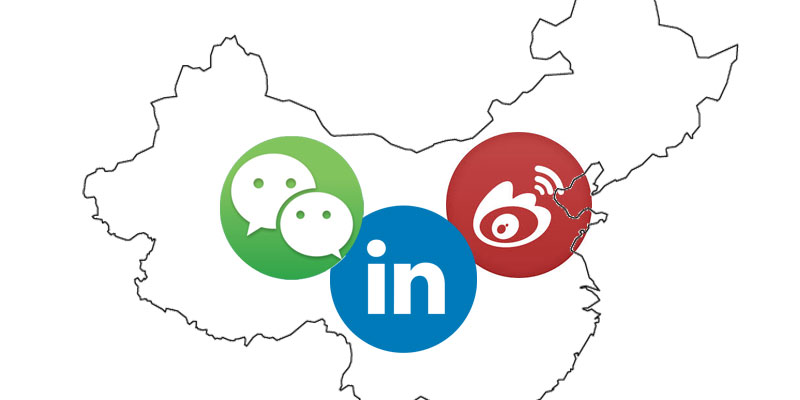Headhunters in China: It’s time to get on social media
Turnover is a problem that plagues companies in all industries, a revolving workforce leads to increased training costs, inconsistencies in work and low morale – this all affects the company’s culture and profits. It is one of China’s leading issues in the workplace, at 19% their employee retention rate is among the worst in Asia.
The most common reasons given by Chinese professionals for leaving, were: limited career progression, and unsatisfactory salaries. Unfortunately companies decided to combat this by engaging in a salary war. The result was that workers would switch jobs as soon as they got a better offer. The most effective way to combat high turnover rates is not simply an increase in salary, it is understanding where Chinese professionals conduct their job searches and what they look for in a job?
Where do young professionals in China look for jobs?
Attracting talented employees that fit in with the company culture is the most effective way to reduce employee turnover rates, the simplest way to do this is to know where people search for jobs.
According to We Are Social’s 2016 Digital report, there are 3,419 billion internet users and of these 2,307 billion people are active social media users. The number of reported social media users is up from last year by 10%, an increase of 219 million and this trend is expected to continue on an upward trajectory. In East Asia it is reported that 48% of people have active accounts on the top social networks in each country. More importantly, 81% of job-seekers in China are applying by phone. The next question is: What networks are they using? LinkedIn, is gaining popularity in China but headhunters should not rely exclusively on this site. Instead, they should use it in conjunction with the two most popular Chinese social networks: Sina Weibo and WeChat.
LinkedIn, their Chinese platform is growing
LinkedIn only launched its local Chinese language website in 2014, due to concerns on how best to approach the market. LinkedIn’s English site had attracted 4 million Chinese users but they wanted to access the other 140 million Chinese professionals and hoped that a Chinese language version of the site would facilitate this. A little over a year later, the site has more than tripled its user count, due to its willingness to play by Chinese rules of expression, and its partnership with two local well-connected Chinese firms. LinkedIn naturally attracts people with multinational corporations and to target young professionals in China LinkedIn is also launching Red Rabbit. Dual brand strategies are a great way for foreign brands to adapt to local culture without losing its brand image. Red rabbit results from the LinkedIn China team research on Chinese young professionals’ communication habits and social media usage; consequently the app has many features similar to Weibo and WeChat.
Sina Weibo, a way to easily get access to all kinds of professionals
This year, Sina Weibo has gained 80 million users worldwide, bringing its total user count to 300 million. Weibo is a microblog that has strong dissemination power for product promotion and job listings. Weibo users can go to an enterprise’s page and click “paying attention”. This means that job-hunters see job updates from their ideal employers. Many users are also posting “micro-resumes”- If you think limiting a resume to one page is difficult, imagine cramming your entire career’s worth of experience into 140 characters. Thousands are posted daily, and many say it is one of the most efficient ways for job seekers to find employment. These short introductions allow headhunters to quickly screen candidates. Weibo had so many people post “micro resumes” and “micro-recruiting” pitches that they have now created an online micro-recruiting service, which provides a much needed space where job-seekers and recruiters can meet.WeChat, the social media giant you cannot overlook
Anyone who lives in China will assure you that it is almost impossible to conduct business here without first creating a WeChat profile. WeChat is a popular messaging app where users can do just about anything, including now find jobs. Headhunters who are planning on using this app, must have a wide network that includes all sectors because they will rely on this WeChat network to get introduced to talented and reliable candidates.The job search is simple, there are WeChat groups that vary by sector (Finance, Automotive, Oil & Gas, Food & Beverage, etc.). Headhunters and job-seekers need only join these groups to connect with each other. Many agree that these groups are more effective than job listings, HR websites, or even LinkedIn. Companies have also established official career accounts where they post employee stories, videos on company culture and job openings.
Additionally, WeChat bots are popular and Jobots (Job Bots) are now being developed. These Job Bots would partner with headhunters and seek the best candidates for the position. The Bot asks questions to get an idea of what the candidate values, personality type and how well they would fit the position.
What do young professionals prioritize when searching for jobs?
Young professionals in China have overwhelmingly listed salary as the most important characteristic for accepting a job offer, but to avoid engaging in a salary war companies should also take candidate’s wants into consideration. Young professionals place a lot of importance on work-life balance, the availability of training programs and opportunities for promotion. The company culture and the relationship with the closest supervisor play a central role in workforce retention. Companies should ensure that they are offering fair compensation in addition to fostering an environment where self-development and relationships are a priority. Recruiters should be able to accurately describe not only the position they are filling but also the company and its cultural offering.
The rise of digital in China has really changed recruitment practices. However, don’t forget that a recruitment strategy is based not only on the internet and social networking websites for professionals. The most effective methods for sourcing talents in china are: the recruitment agency specializing in a particular area, access to a great talent pool; the headhunter’s personal network and referrals: direct contact with applicants through a reliable intermediate; LinkedIn, users in china have a profile and are most active on the site, the page offers the website of the company; WeChat groups.
An efficient recruitment strategy is the combination of all these elements.







